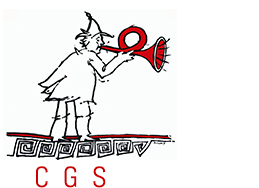Tarantism is without a doubt the most studied of Salentine cultural phenomenon. If we summarize it in absolute terms we can say that the following conditions must exist for tarantism, that defined as such by the De Martino team, and the consequent liturgical pizzica tarantata (tarantula bite) to occure. First of all there must be a credence in the tarantula bite, which hurts and causes an illness that must be cured by dancing. A phenomenon of an altered state of consciousness, driving from the credence, organized and regulated in a way that is socially accepted within a rite accompained by music. The music in this situation regulates a disturbance and a difficulty. Therefore, minimizing truly limiting because first of all it diminishes the spirituality, history and culture behind this phenomenon by implying that the tarantata reacts to the sound of the tabor and comes to life. If we really believe that it is only the music that induces the trance, we are badly mistaken; the music does something entirely different – it regulates the trance and gives it an order. Tarantism as a phenomenon in itself has ended because there is no longer the credence that the tarantula bites and causes illness. This is true also because the specific elements of a given area, though isolated, are not immutable. They have already undergone changes throughout the centuries, they change right in front of our eyes and will continue to change in their specificity, previously as a slow pace, today more rapidly and nothing can stop them from changing. To believe they are not changing is a conservative dream of those who want to turn entire communities into museums, into a romantic view of “peasant society” that has now been left behind and rejected in daily life. It is necessary to single out the roots of old cultures that are still alive, pick up the essential features that are survived and take into account how they have changed and how they could be transformed in the encounter-synthesis with other cultural expressions: only in this way can this culture be revitalized and oriented in relations to active components of development.
The “new” tarantati
Today young people are not in contact with the hard work of the fields, tarantism or funereal laments, but they nonetheless feel the weight of suffering and melancholy that most of our songs have produced and some of them have existential hardships comparable to those afflicting the tarantate of past years. Tarantism is a model of penetration inward from the outside, tipical of oppressive society that are organized according to a rigid model. It is defined as a possession caused by the tarantula bite,like a spirit, whether it be the devil and any other type of spirit, entering the body to possess it and make it to something it does not want to do, something undeiderable and undesired.
The new tarantati are not possessed by anything or anyone but are nonetheless seeking a god and they gather in hundreds with the tambour to dance, sing and try go into a kind of trance in which they are not sick or feel sick. They are not afraid of being seen – to the contrary they feel that knowing how to do it is a privilege given to them by the relationship they have with their divinity. They show off the calluses and wounds they get from a prolongued use of the tabor and they propagandize their experience. The culture between this phenomena is completely different from that of possession because it is not considered an illness, it need not to be cured, and there is no reason to be ashamed of it. Of the tabors of many Salentines there is a painting of the famous Dancing God, painted on the walls of the famous Grotta dei Cervi (Deers’ Cave) in which wall paintings testify to the passage of the Paleolithic period to the Mesolithic and the Neolithic. The figure has so affected the imagination of Salentines that they have identified it with a divinity they consider to be the origin of a deep popular culture, still containig an inestimable legacy. And it is in the “bite” that they see its “heart still beating”, it is the bite that can transmit the message.
